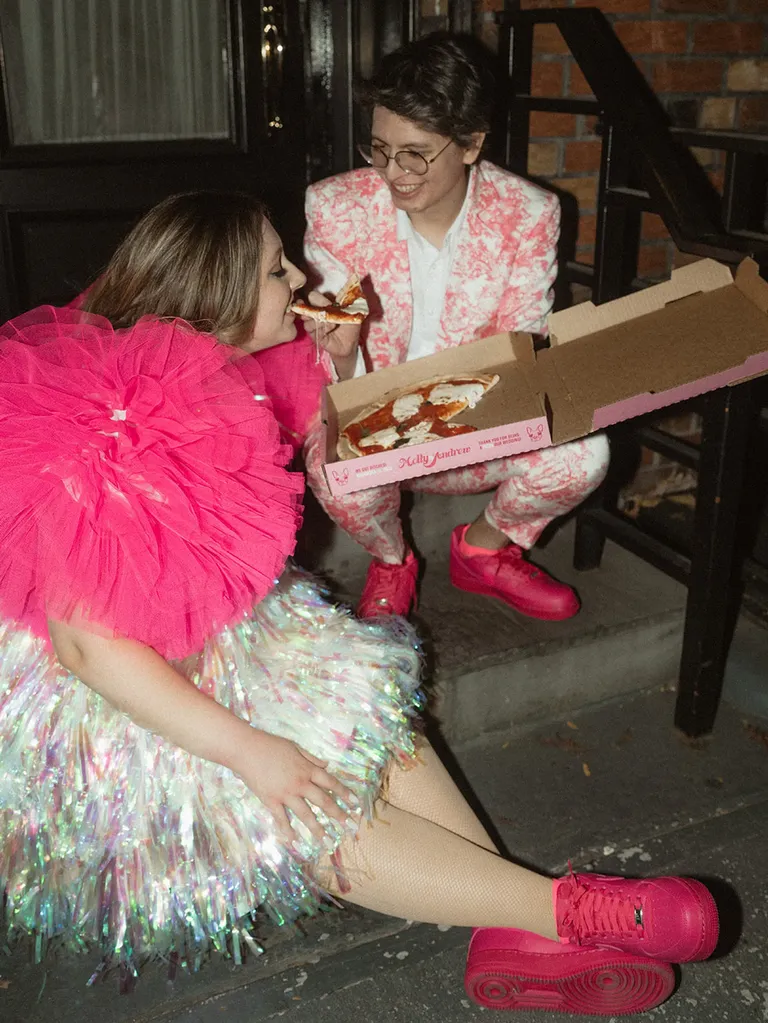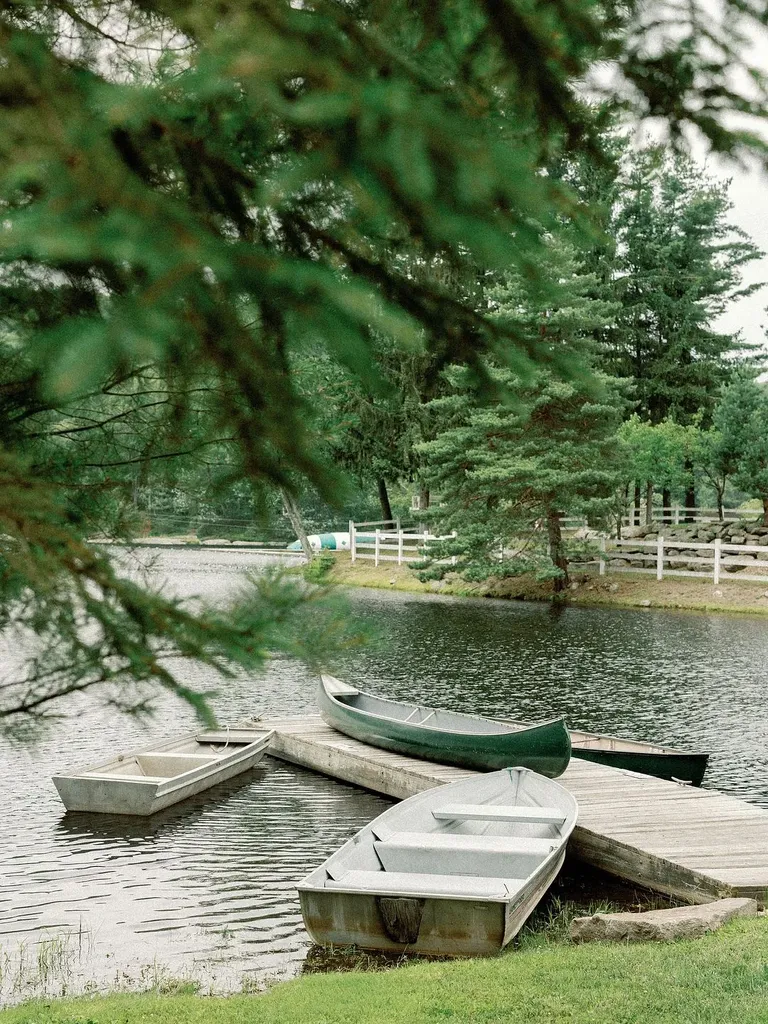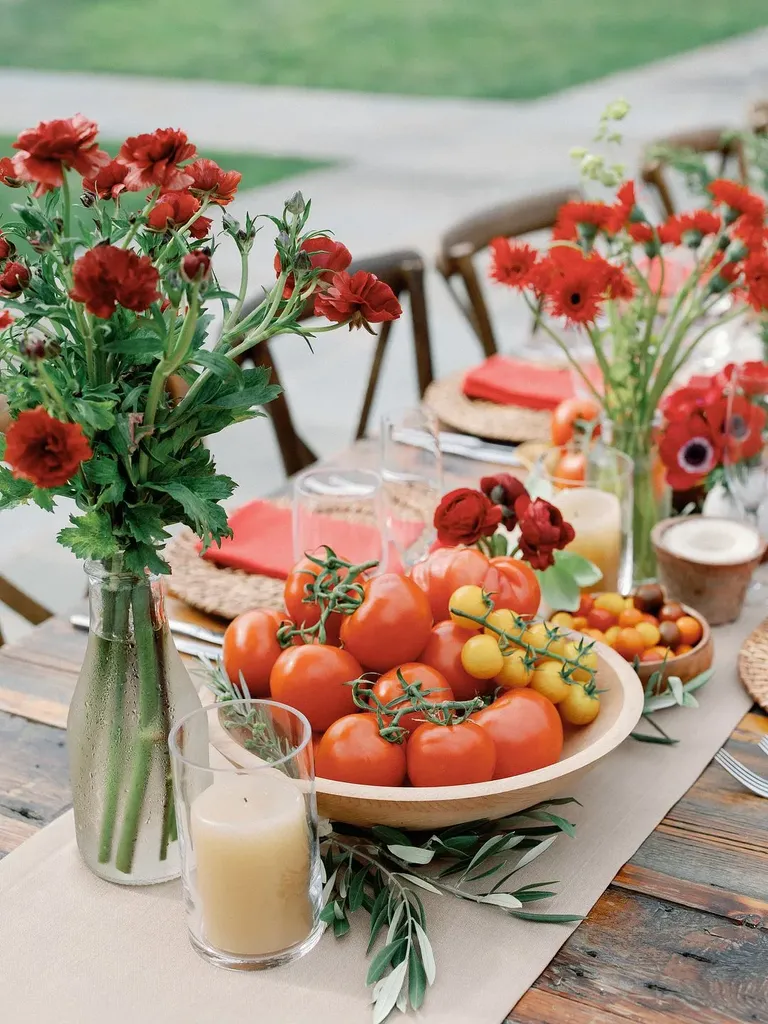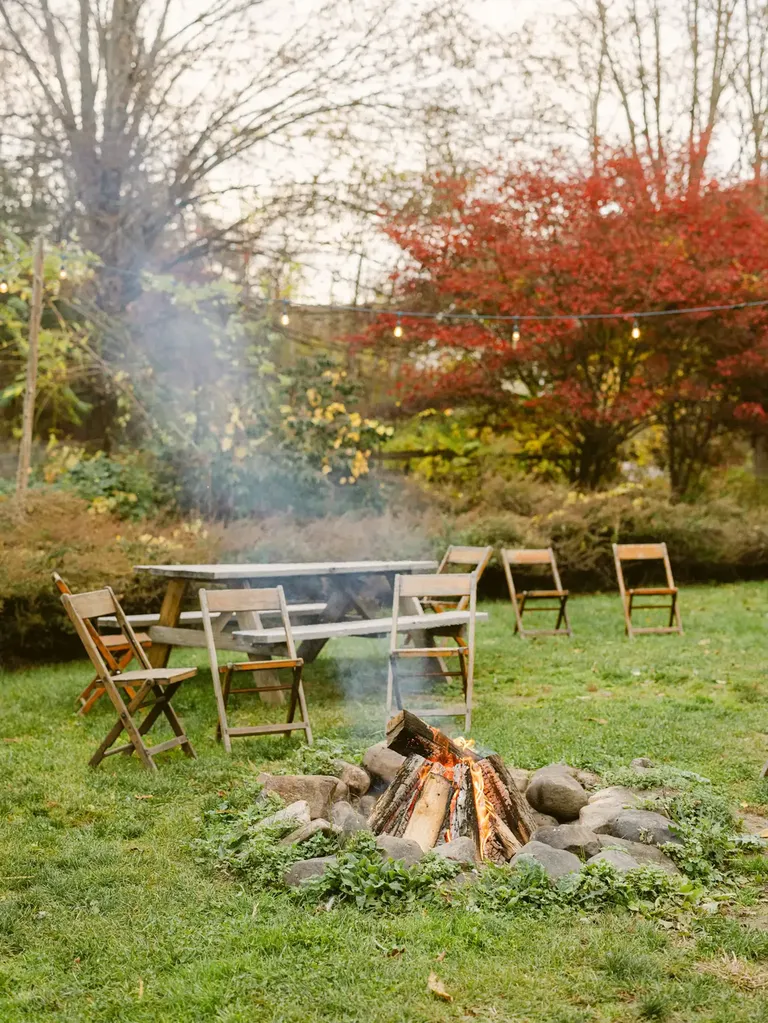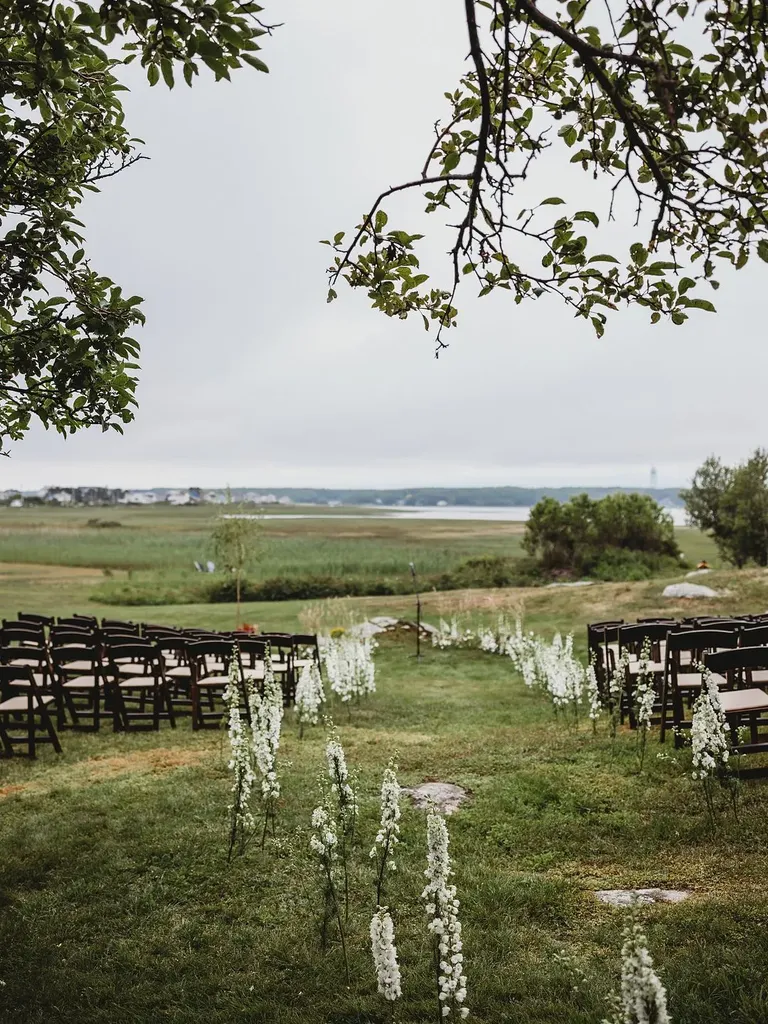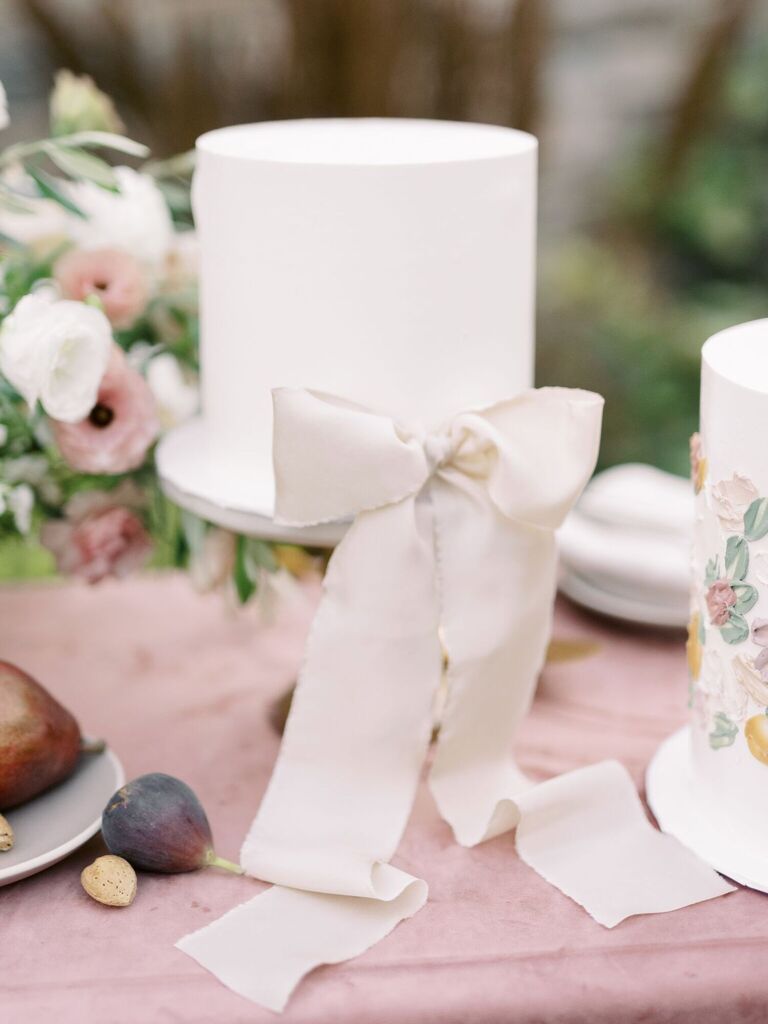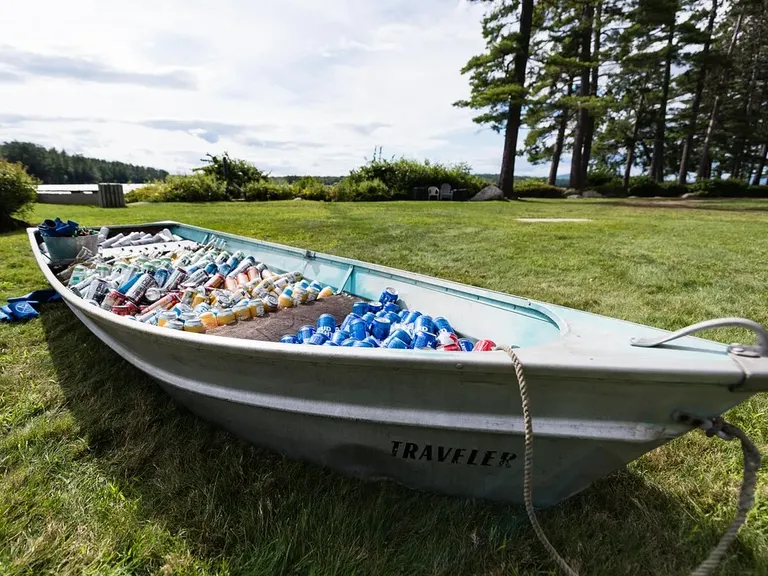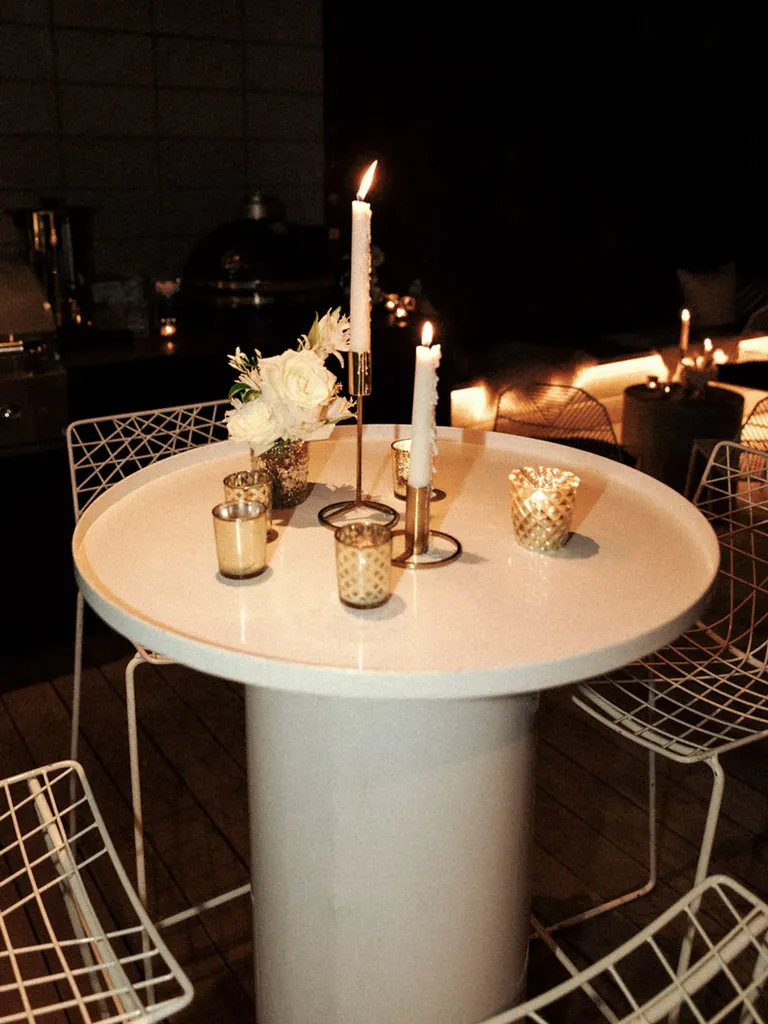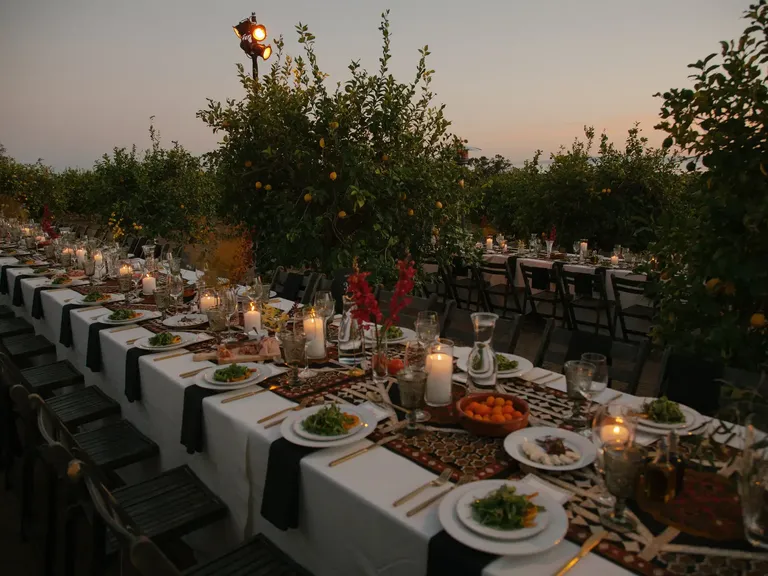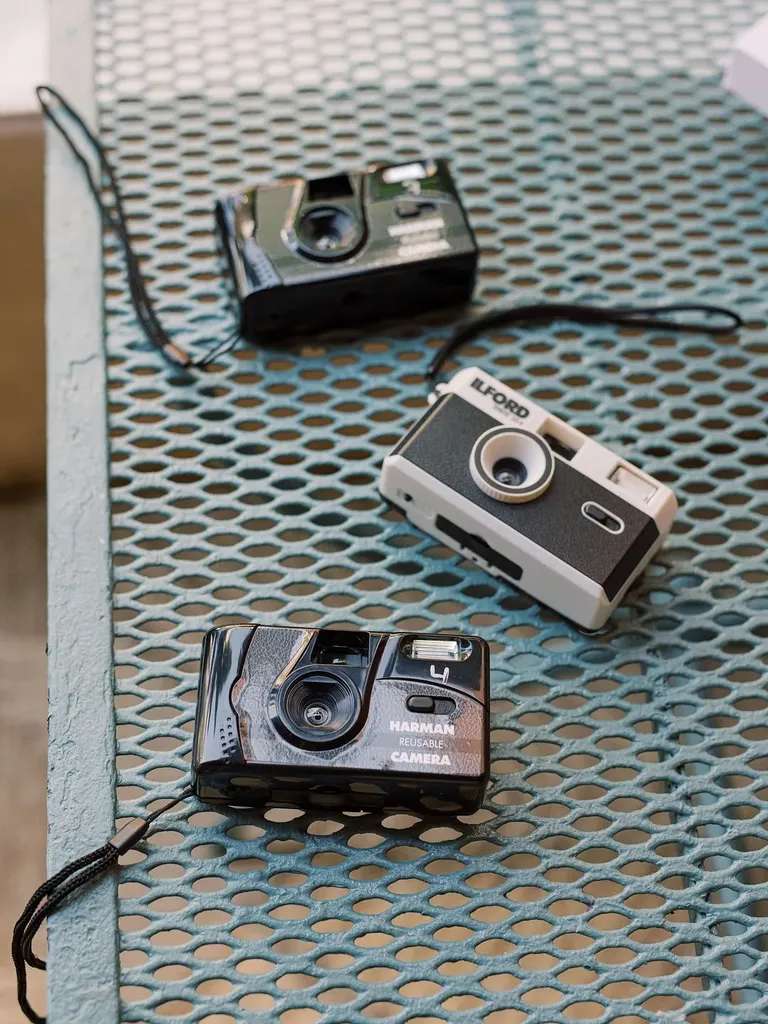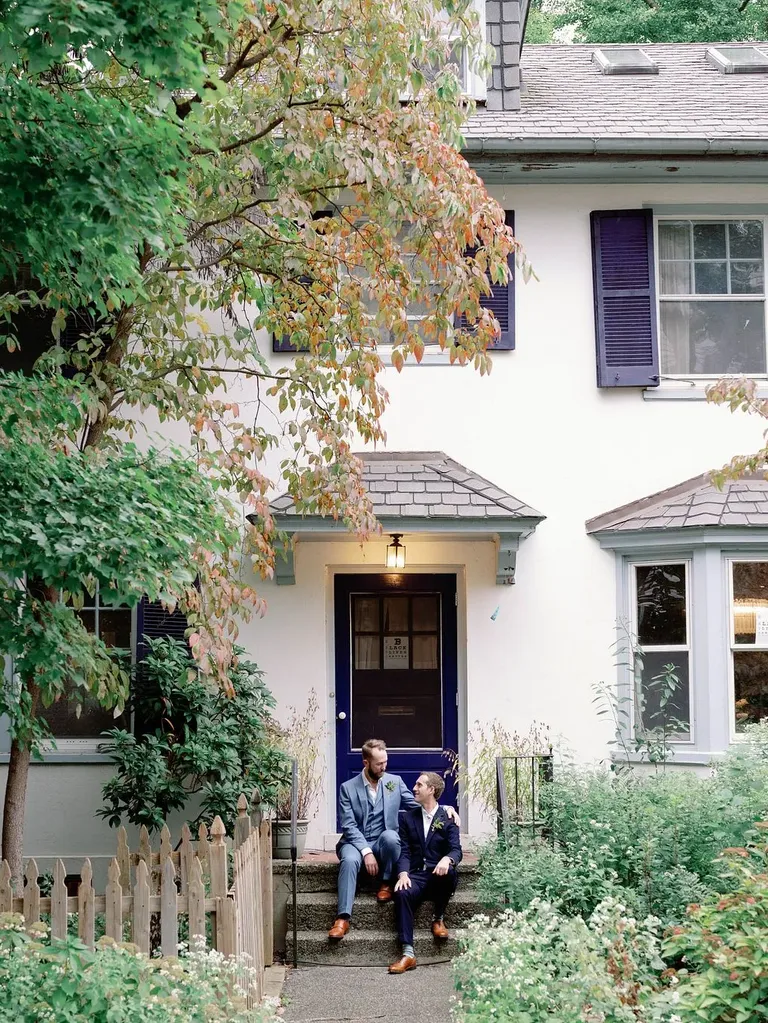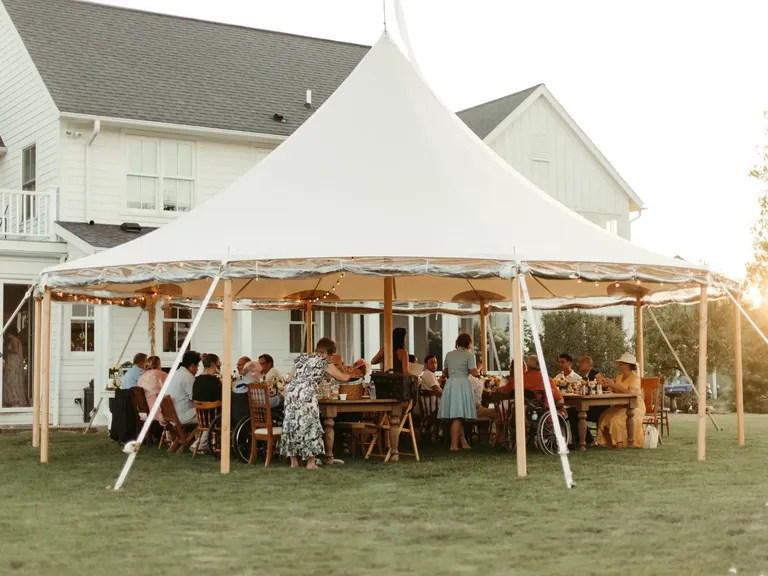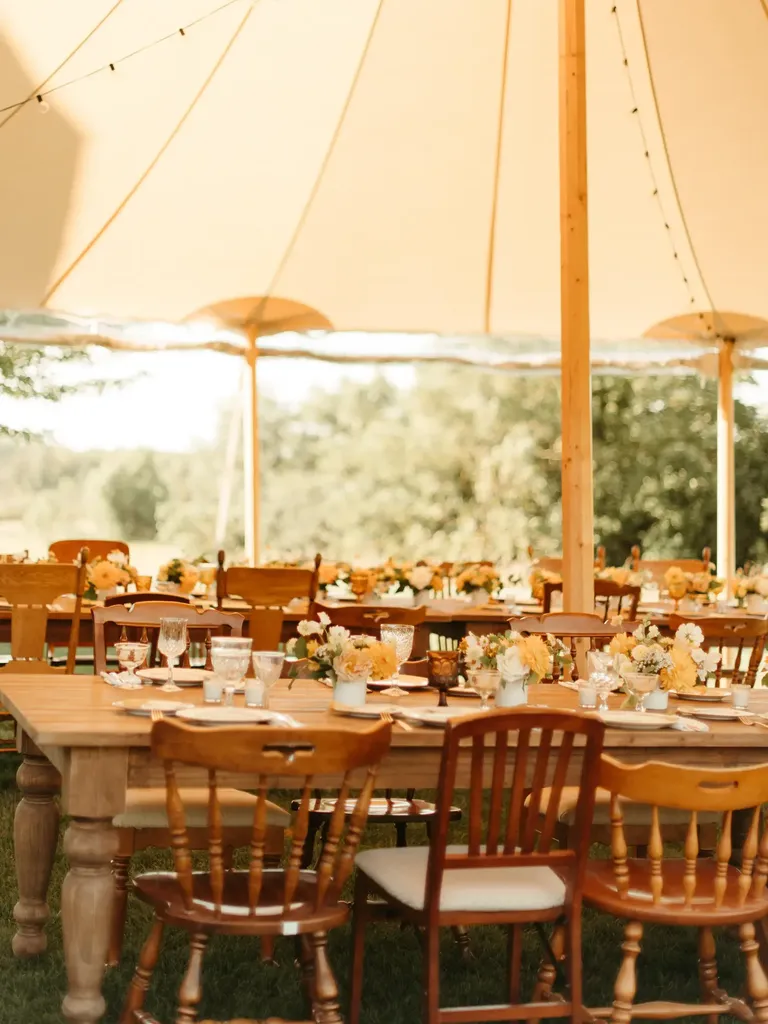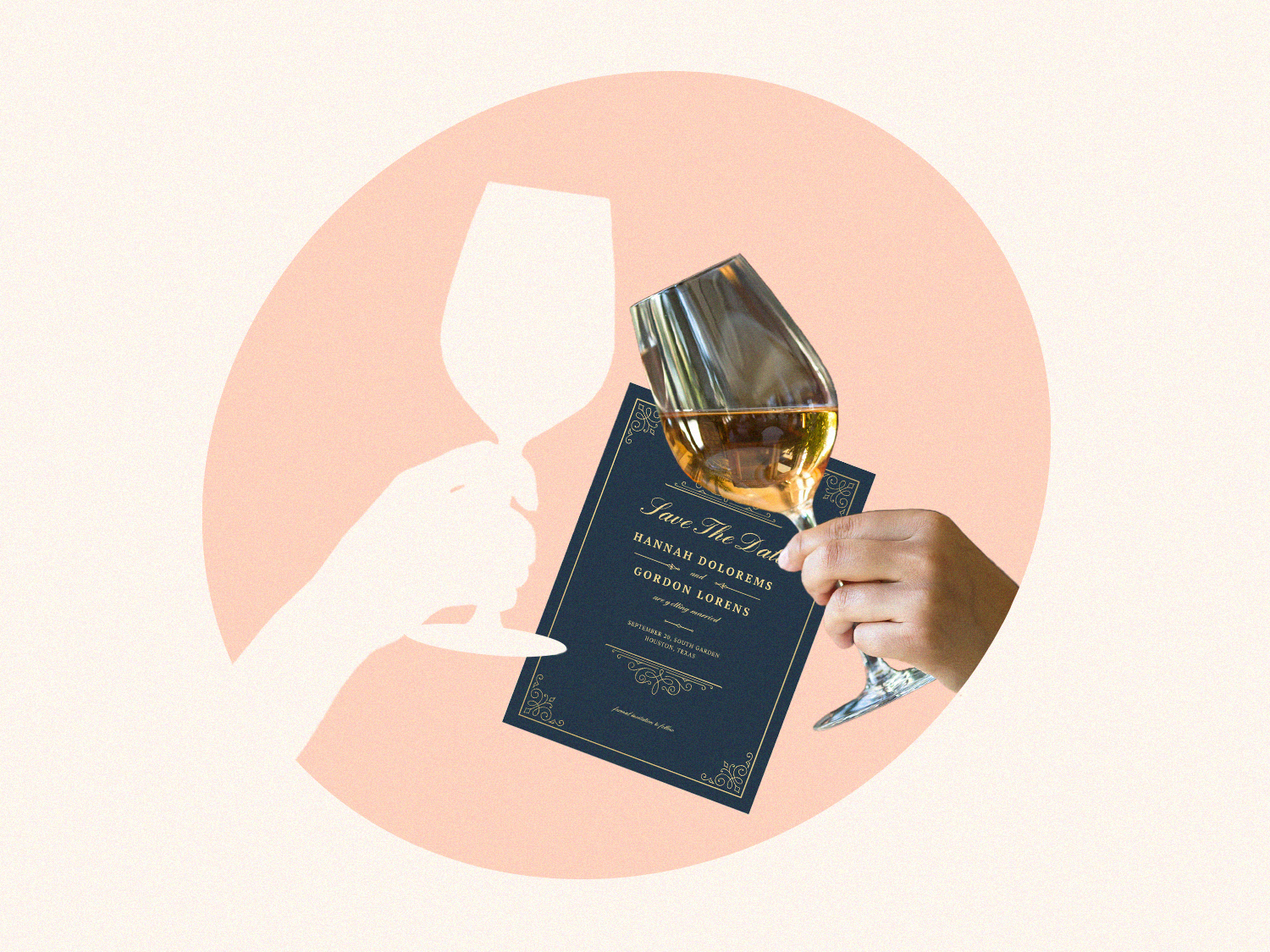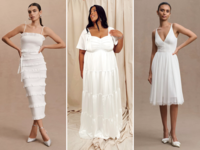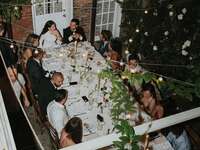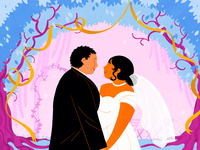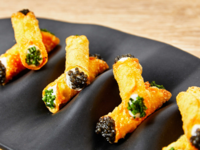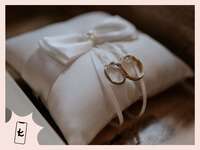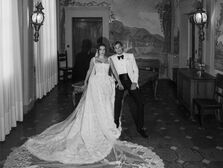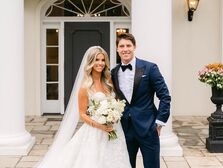How to Have Casual Wedding That Still Feels Like a Wedding
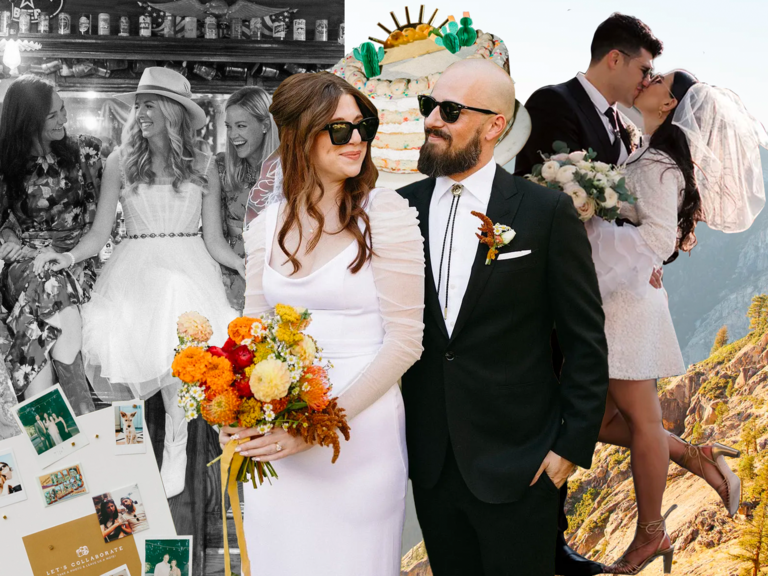
The only must for a wedding is that it keeps your love at the fore—no (wedding) bells and whistles required. And therefore, the event should feel true to you. If you have a "Sunday kind of love" as opposed to a splashy, Saturday-night style of romance, a casual wedding might speak to you. According to The Knot Real Weddings Study, 16% of couples that married in 2023 opted for a casual wedding celebration. Less-fuss fetes are likely a trend that'll continue on, given a growing awareness from engaged couples over the economy (seven in 10 noted that it's already impacted their wedding planning) and as the cool-girl, anti-bride aesthetic proliferates.
Whether you're drawn toward simple, weekday nuptials or a relaxed dinner-party-style gathering, an informal wedding can take shape any way that feels right. For couples hoping to plan more-chill "I dos," we've composed a guide covering the ins and outs of how to plan an informal wedding peppered with dreamy casual wedding reception ideas and expert intel from Michelle Tu, founder and principal planner at Somni Weddings & Events in Los Angeles, California. So kick off those fancy shoes and get reading.
In this article: Definition | Venues | Ideas | How to Plan
What's Considered a Casual Wedding?
A casual wedding is broad by definition, but the common threads are a more relaxed energy and laid-back aesthetic. Often, these relaxed weddings will eschew a few formal traditions and etiquette practices, but they can still be elegant—think: the dinner-party wedding trend. Low-key weddings are typically smaller in guests count, since they take place in more-intimate settings that could even include the couple's or a family member's home.
These events can span the spectrum from JFK Jr. and Carolyn Bessette's cozy ceremony in a tiny chapel, to an edgy NYC pair hosting nuptials in their favorite restaurant, to a breezy backyard bash that actually gives you the opportunity to crack open a drink, loosen your tie (if you're even wearing one) and catch up with your loved ones. "A casual wedding is perfect for couples that want a more personal, intimate and unique experience," says Tu. "It gives the couple the opportunity to get creative and to think outside of the box."
How to Find Casual Wedding Venues
The first place to look to find a casual wedding venue near you is in your own backyard—literally and figuratively. Popular ideas for casual wedding venues include a favorite wine bar, neighborhood restaurant, beach, patio or backyard. "A casual wedding is typically set in a comfortable and familiar setting for the couple, such as their private home and backyard," says Tu. "The space in comparison to a traditional wedding venue is much more meaningful and the relaxed nature of the event allows the couple to thoroughly enjoy themselves with their closest family and friends."
If your backyard isn't quite equipped to accommodate all of your loved ones, you can look to The Knot Vendor Marketplace to easily find a venue to host your chill nuptials. Filter by the types of spots you're open to (there are options for barns, beaches, backyards, parks and other low-key locales) and you won't have to sift through estates and ballrooms. "Intimate venues offer a more private experience compared to large hotel resorts," says Tu. "It also helps when the venue doesn't have strict rules and regulations on the specific vendors couples can bring in, as oftentimes couples would want to source catering from their favorite restaurant or desserts from their favorite local baker." Just ask the venue staff to find out.
Casual Wedding Ideas
You're passionate about keeping the festivities relaxed, chill and cozy-elegant, and we're here to help you do just that. Check out our favorite casual wedding ideas below.
1. Pizza in Boxes
It doesn't have to be displayed in a cute, custom box as seen here (though it totally could be), but something about serving pizza at your wedding just hits right. Go for a more sophisticated, wood-fired Neapolitan vibe, or simply coordinate with your local shop to get a sky-high stack of pies.
2. Chill Lake Venue
Whether you're going for a summer camp vibe or cozy woodland feel, a lakeside setting is perfect for casual nuptials. Using a dock as your aisle is optional.
3. Garden-Fresh Centerpieces
Some simple bunches of blooms alternating with bowls of fruit makes for an easy centerpiece that's big on the dinner-party vibes. Consider keeping it within a semi-monochromatic color scheme to bring out the different textures.
4. Fire Pit
A fire pit will set the cozy, backyard-party mood for your casual wedding. And if you pick up some sticks and s'more supplies, it can easily step in to help your guests make DIY a dessert.
5. Wispy White Stock Aisle
Sprigs of white stock feel unpretentious and unfussy as aisle markers. They blend into the natural landscape as if wildflowers just grew where you wanted to say "I do." You could also recreate this look with other tall, slender florals, like lavender or foxglove.
6. Simple, Single-Tiered Cake
No need to have a multi-tier confection for a casual wedding, but a single-tier cake feels celebratory and sweet. We love the simplicity of this white one that's fastened with a silky bow.
7. Beverage Boat
Something about a casual wedding just calls for getting creative with the drink coolers. If you're set to wed on the beach or lake shore, an old row boat makes the perfect vessel to hold canned beverages for guests to help themselves to.
8. Minimal White and Gold Centerpieces
A couple of taper candles arranged with votives and a tiny bud vase of white blooms is all you need to bring some sparkle to your tables. It works everywhere from a backyard to a wine bar.
9. Orchard Venue
Tucking some tables in between the rows of trees in an orchard or fruit grove feels cozy and romantic, yet unfussy. Keep decor minimal and let the setting shine.
10. Film Cameras
Whether you use film cameras like these or some disposable snappers, scattering cameras around for your loved ones to take impromptu shots throughout the night feels like a fun activity and it results in some cool, candid images. We'd still recommend hiring a pro photographer, though.
11. Simple, Ribbon-Bound Bouquet
Neutral-toned flowers bound by a cloth ribbon is all you need for a romantic, casual wedding. The fact that there isn't much additional greenery helps add to the relaxed, garden-picked feel.
12. Family Home Venue
You don't need a fancy family estate for a sweet, at-home wedding. A casual wedding at your parents' house or even at your own is so sentimental and special.
13. Small Sailcloth Tent
A sailcloth tent feels elegant, coastal and casual all at the same time. It feels like an intimate picnic with all of your favorite people.
14. Mismatched Dining Chairs
Whether you're sourcing them from antique stores or borrowing them from your friends and family, going for mismatched dining chairs is an easy way to create a relaxed ambiance. You can opt for the same material (for example, all wood or all upholstery) if you want to keep things a little more cohesive.
15. Scribble-Style Invites
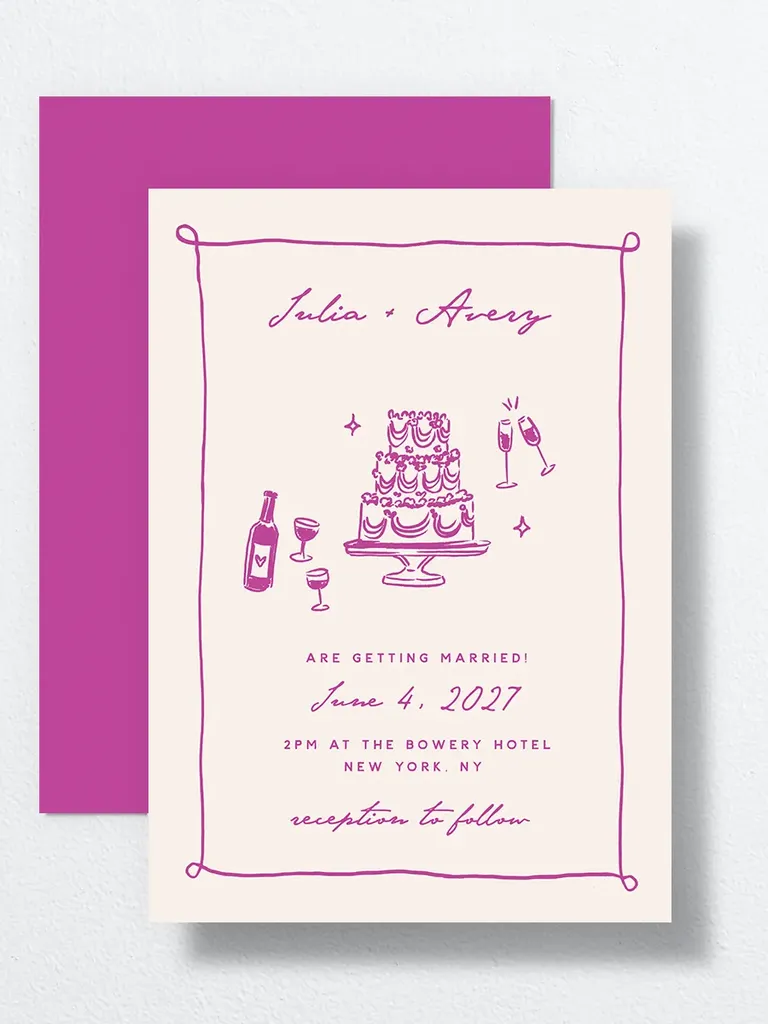
The scribble invitation style has been trending hard this year and it's the perfect design for low-key nuptials. Plus, this design comes in tons of colors.
How to Plan a Casual Wedding
Just because your nuptials are more chill, doesn't mean some helpful, pro-backed planning tips won't be helpful as you put it together. "While we still have many couples that opt for a traditional formal wedding, we do see a trend of casual weddings in recent years," says Tu. "Regardless of the formality, though, it's important to start planning as soon as possible for a smooth experience. Casual weddings can sometimes have more unknowns and hiccups along the way, and you'll want to give yourself ample time to resolve them."
1. Feel Confident in Your Decision
It's absolutely okay—not just okay, amazing—to have a casual wedding. And those that love you will (and should) support your decision to keep the festivities relaxed. A good rule of thumb is to not divulge too many wedding details to folks who aren't invited to avoid contending with unsolicited opinions. And if you're concerned about your close friends' feelings on the possibility of you dropping traditional trappings, like attendants or social prewedding events, don't worry—there are lots of casual wedding party ideas you can incorporate, if you'd like. Or you could even dub your nearest and dearest an "informal wedding party," where maybe the members wear wedding guest outfits in the same color palette on the day, or maybe they're just your point people to get down on the dance floor with.
2. Find the Right Planner
You might think a casual wedding means you don't need much planning help. But there are lots of special stipulations and hidden costs to contend with that only a pro can guide you through. "There's a misconception that a casual wedding is always less work, however, most of the time it actually involves a lot more logistical planning compared to a standard wedding," says Tu. "From getting precise measurements to obtaining city permits, you may want to bring on a professional to assist you with this process."
3. Hash Out Your Budget
According to Tu, casual weddings are typically less expensive, since they indicate a smaller guest count and sometimes a venue you can access for free, but they're not always as cost effective as they seem. "If you have to cover your existing pool with new flooring and/or a tent structure, or build out a commercial kitchen because the menu you selected requires the caterer to cook on site, this is when it could be more costly than a standard wedding," she says. "However, you also have more flexibility in the different vendors you bring in instead of following a strict preferred vendor list. This would be easier for you to control your overall budget." Another great tip: Use The Knot budgeter tool to keep track of expenses and figure out how much you can allot to each aspect of your day.
4. Determine Your Guest List and Count
A low-maintenance wedding probably means less guests, with less folks to feed and entertain, it'll be a little easier to keep things casual. Plus, it can feel more like a party if you actually have time to sit and chat with each guest, not just give them a breezy hug before you move on to the next table. Though if you really do have 100ish must-have attendees, consider a venue that feels laid-back and unfussy, but can still accommodate your people. For example, estates and orchards both can handle a high guest count (they both likely have big rolling lawns for outdoor nuptials), but the orchard lends itself better to a more informal experience overall. Once you have your number, use The Knot Guest List Manager to keep track of everyone.
5. Make Your Menu
"Especially with a smaller guest count, you can be more thoughtful on all the various details, including food and drinks," says Tu. Fewer folks to feed and entertain leaves room for some thoughtful details, even if you're aiming for a low-maintenance wedding overall. Remember: Easy doesn't mean low quality. For example, you could have a simple European-summer inspired menu, with family-style platters of fresh tomatoes and burrata, grilled fish and simple, hand-made pastas.
"A couple can opt for one caterer, or two, or three. We love offering different food stations so our guests have a wide variety of options to choose from," says the pro. "The bar can also be upgraded to a bespoke bar with unique craft cocktails of the couple's favorite flavors and scents. Instead of a formal sit down dinner, this creates a relaxed and effortless atmosphere for the couple to mingle with their loved ones."
6. Let Your Venue Do Some Decor Heavy Lifting
"It's a misconception that a casual wedding is less aesthetically beautiful, but with some creativity and design work, any casual wedding can be just as beautiful as a formal wedding," says Tu. "For casual weddings, our motto is always to enhance the existing space. We wouldn't want to choose an aesthetic style that works completely against the existing space, but rather to find ways to enhance and elevate what is already there and build upon that."
One note when it comes to decor, though: Be judicious about what you choose to DIY, even for a chill affair. "When executed well, DIY elements can be very personal and leave an everlasting impression on their guests," says the expert. "At the same time, it's also important to assess the amount of time and stress this may add. Oftentimes, couples overlook the amount of set up and clean up time that's required for certain DIY elements."
7. Get Friendly With The Knot Wedding Checklist Tool
There's a lot of legwork that goes into wedding planning, even if it's a casual backyard wedding. The Knot Checklist Tool will help you stay on track and also acknowledge which elements you might be forgoing or making less fancy as you go. Plus, it'll assign a date to complete every planning task by, which is a great way to keep casual couples (that might be a little less type A) organized.
8. Know Which Pros You Need
You can find nearly every kind of wedding professional you need on The Knot Vendor Marketplace. And yes, you probably know well enough to find a great spot to pick up a casual wedding dress or book the perfect photographer to capture casual wedding photos, but you might have to consider some extra vendors if you're hosting your wedding in a non-traditional venue like a beach, field, park or backyard. For example, you'll need seating, hookups for any music and lighting—and also need to figure out who's setting everything up and performing any service tasks. Tu says: "Make sure to assign a designated personnel to oversee your setup and clean up so you don't have to stress about it the day of and day after the wedding."
9. See What Traditions You Love or Can Skip
We love a tradition-bucking casual wedding as much as the next person, but be sure to double check with your wedding planner and officiant that there aren't certain elements you must include in the ceremony to make your marriage legal. This varies from state to state.
10. Send Out Invites That Set the Mood
If you mail out bids with swirling script and formal language, your guests will be really confused when you say sundresses and sandals are the perfect wedding attire. You should have casual wedding invitation wording and a less-formal design style that matches the mood and aesthetic of your wedding. So if you're going casual, skip the honorifics and have a little fun.

